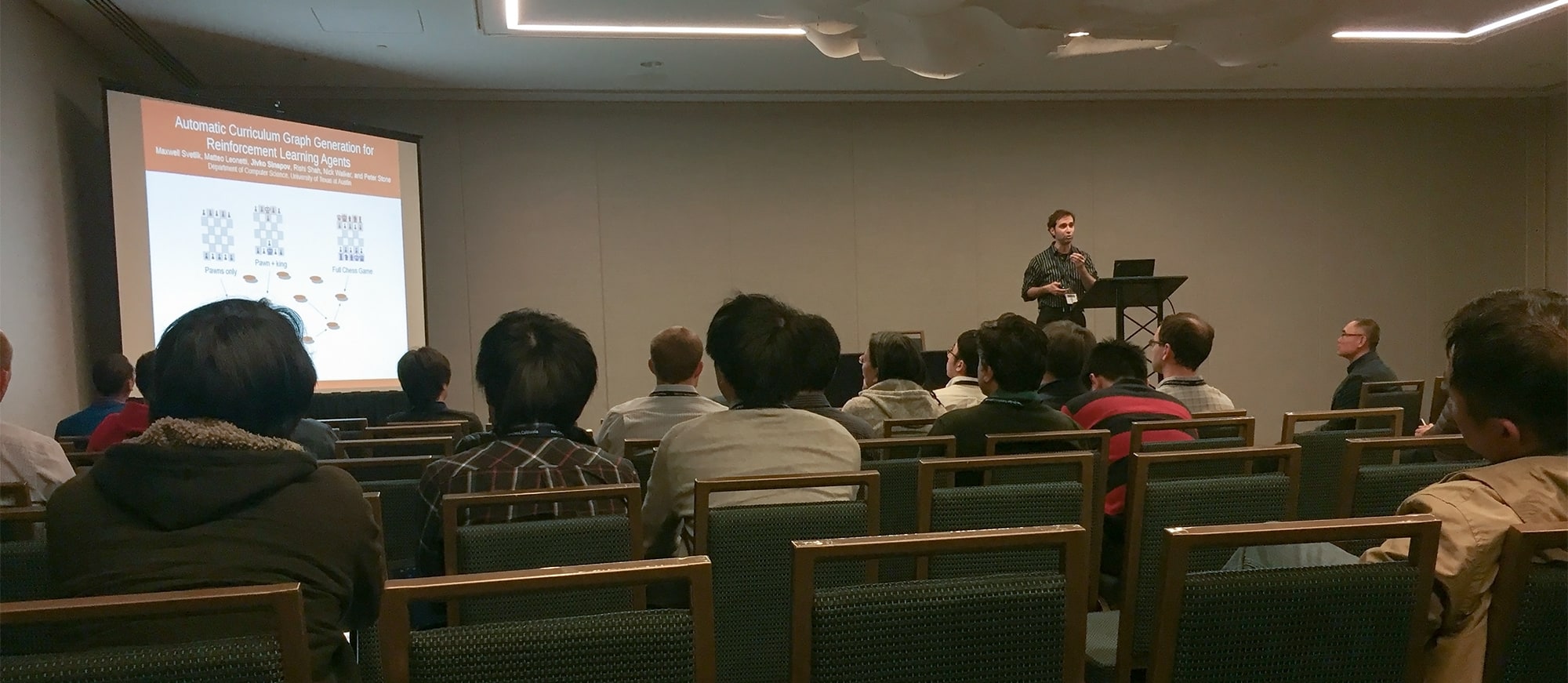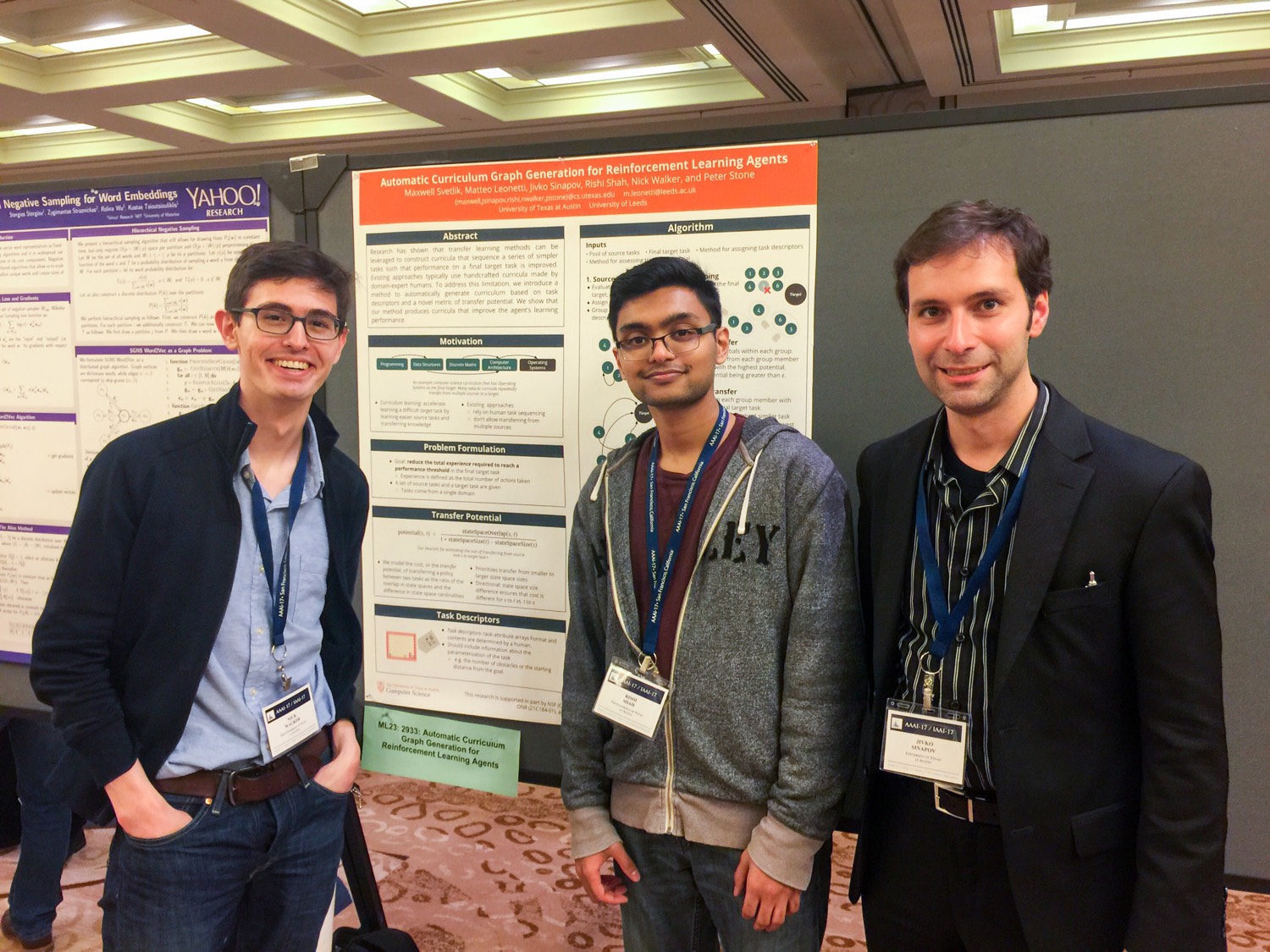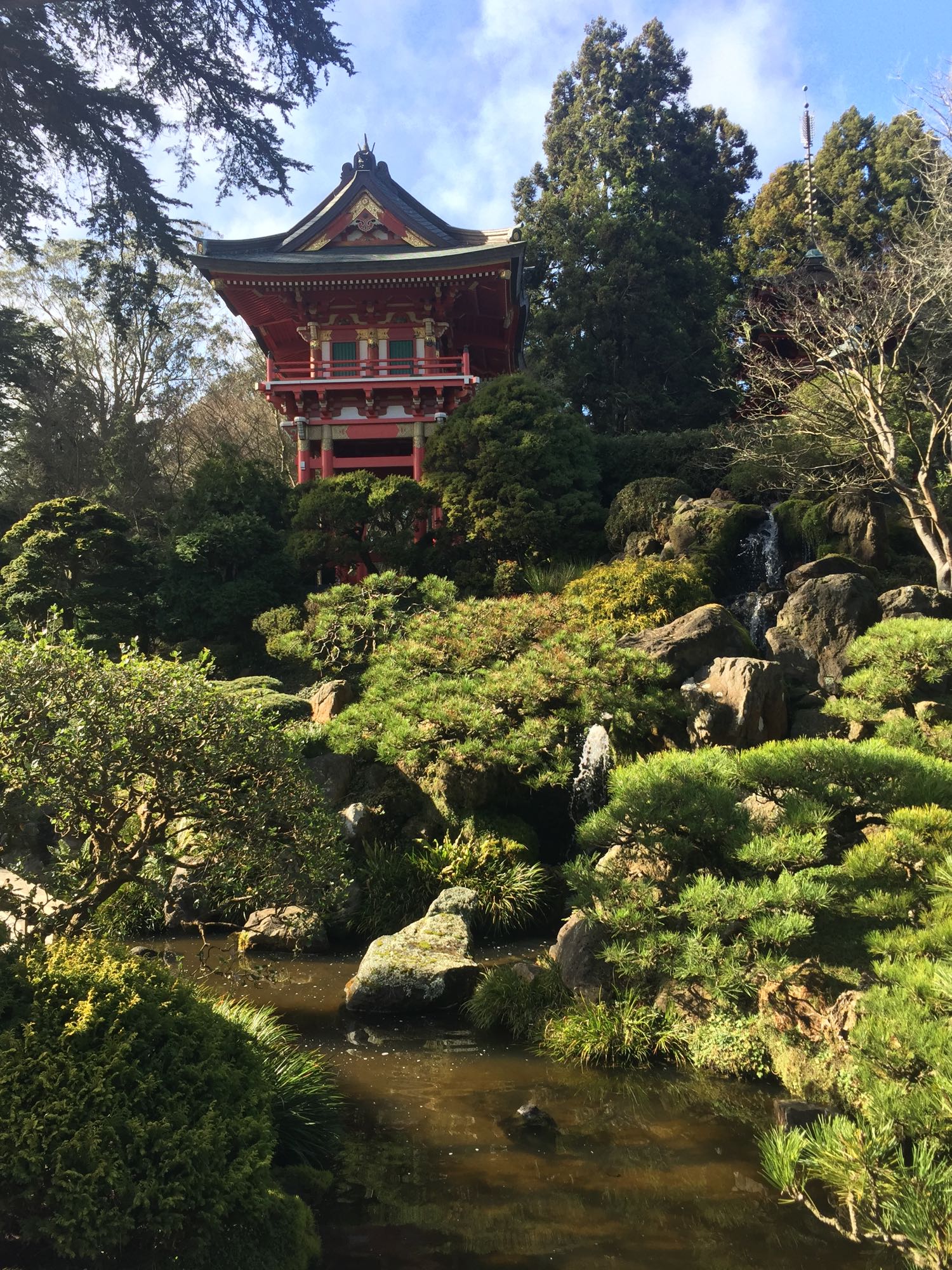First Conference: AAAI 2017

Jivko giving the poster spotlight for Automatic Curriculum Graph Generation for Reinforcement Learning Agents.
I attended AAAI-17 in San Fransisco last month, my first academic conference. I went in with only a vague idea of what the week would be like. Every conference is different, but my experience might help you set your expectations and better prepare.
Tutorials
The first two days were wholly dedicated to four-hour, lecture-style “tutorials.” Each was led by two or three researchers who had signficant experience with some subtopic, like logic programming or optimization. There was a good range of topics, and I appreciated the chance to get exposed to ideas from across the field. You could ask questions at any time, and the presenters were prepared and enthusiastic. Unfortunately attendance was pretty light, likely because they were scheduled against a number of industry-sponsored events. Also, I imagine late students or established researchers grow jaded to the value of sitting in classes for a weekend.
In particular, I enjoyed Interactive Machine Learning and Paper of the Future. Both covered topics that aren’t accessible via coursework at UT.
Technical Sessions
The meat of the conference was the technical sessions. AAAI has tracks for just about any AI subdiscipline, so the four weekdays of the conference were packed with a hodge-podge of one and half hour long blocks of thematically-related talks from authors. A lot of these were pretty bad. Many speakers tried to fit too much information into their 15 minutes or focused on definitions and minutia that weren’t essential to the core result of their work. Though ostensibly these presentations are about the work that was done, they must also sell the audience on reading the paper so they can learn more and cite it in the future. The best presentations were faithful to the work, but also made a clear case for why the audience should take the time to look more carefully at the paper later.
Posters

Me, Rishi and Jivko in front of our poster. Thanks for the photo, Shiqi.
The format changes from year to year, but this year all papers were assigned to either a talk (to occur in a technical session) or a poster. Every day, fifty or so posters were set up in a ballroom, available for viewing starting at six in the evening. The organizers arranged to have dinner (and amazing desserts) served, so these showings had a lot of traffic. Some people were in browse-only mode, reading titles and abstracts, maybe taking a photo of a poster with their phone. Others would ask for a walkthrough, interjecting with questions or comments. These usually lasted five to ten minutes.
Poster designs ranged from “enlarged version of the paper” to “illustrated companion.” Some of the text heavy ones were well executed, but overall I felt like the simpler posters tended to be more successful. Unlike the technical session, there was plenty of time to discuss the work in great depth–but the vast majority of the passersby were there for a pitch, not a lecture. Having good supporting graphics and charts for this audience is more important than including every last detail. As a bonus, nice figures are magnetic. We got a number of comments from people that our eye-catching diagrams were the reason they stopped to talk to us.
Student abstract posters were mixed in every evening. These were largely from undergraduates or early graduate students, and showed work in progress. I didn’t even know this type of submission existed, but they seem quite common at most conferences.
Poster sessions were also the best schmoozing/networking part of the day. People would stand off to the side of the ballroom while they ate, and it was easy to strike up conversation. It’s too soon to tell, but I feel like meeting people like this was the most valuable thing I did at the conference.
Other Activities
Each morning and evening, distinguished researchers gave invited talks on their work. These were typically fairly accessible and interesting, and much more polished than the technical session presentations happening.
There were a number of industry talks, though most of these were just thinly veiled recruiting presentations with little technical value.
The career fair was great because all of the companies there were interested in recruiting people with exactly the attendees’ background. This is a little unusual if you’re used to general university fairs where the recruiters probably only have a faint idea of whatever your research topic is and little inclination to hear about it.
The Innovative Applications of Artificial Intelligence (IAAI) conference was colocated with AAAI this year, and a standard registration was good for both. There were a lot of sessions where researchers from universities and companies alike showed off impressive practical work.
There were a few student activities throughout the conference. I got to eat lunch with Sven Koenig through Lunch With a Fellow, and I met lots of impressive students (including many more undergrads than I was expecting) at the student reception.
The City
After the conference, I had a couple of days to see the city. I did a bunch of touristy things (Fisherman’s Wharf, Pier 39, California Academy of Sciences, Chinatown). It was also cool to visit Union Square (Uniqlo!) and see all of the landmarks that crop up in conversations about San Francisco. We managed fairly well even without much advanced planning, but it may not be so easy in other places.
